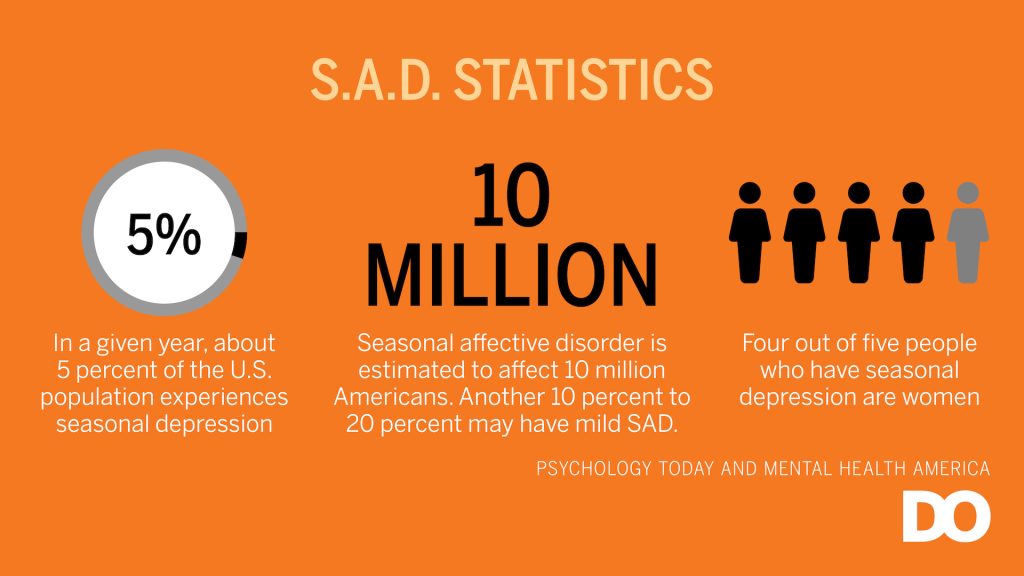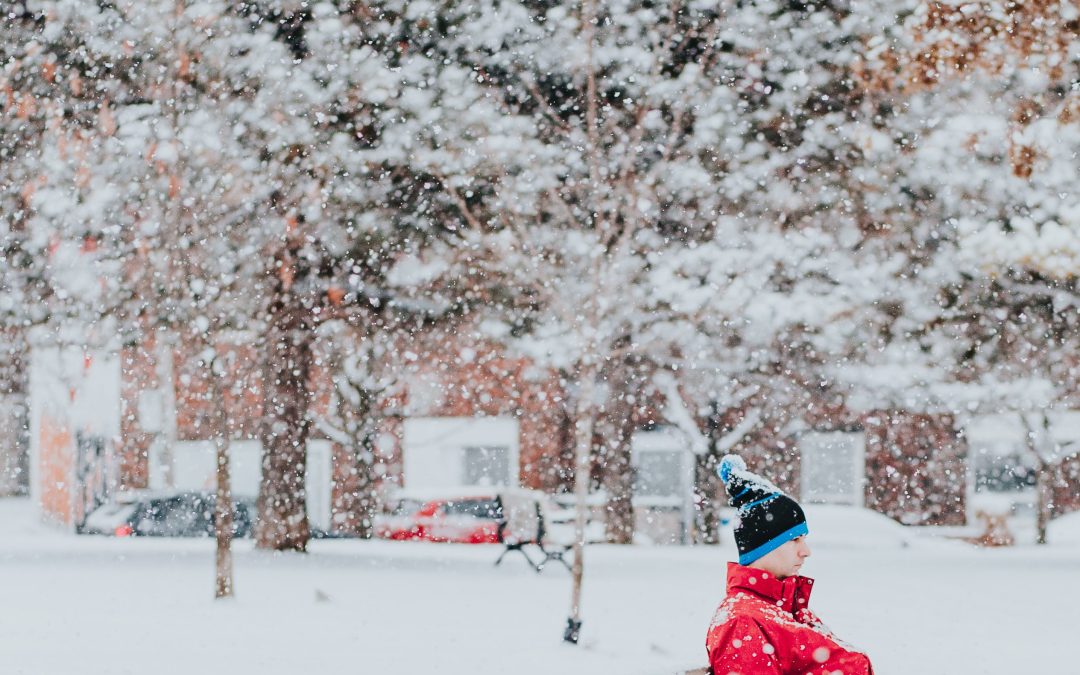As COVID-19 cases continue to rise throughout the United States, this undoubtedly is going to be a difficult winter.
While COVID-19 has already brought about a multitude of problems, such as unemployment, social isolation, and a fear of the unknown, growing evidence unfortunately is finding that things may only get worse in the coming winter months.
David Relman, a microbiologist at Stanford University, stated that “this virus is going to have a heyday” because of what we already know about the ways in which the virus spreads and how people behave in colder months.
On top of everything, people who have struggled with seasonal affective disorder, fittingly referred to as SAD, are going to face a double whammy this year with the current state of the pandemic.
Although many people often begin to feel down as the days become shorter and the weather becomes colder, it is important to recognize the severity of this specific type of seasonal depression.
What is Seasonal Affective Disorder?
According to the National Institute of Mental Health, about 5% of the U.S. population experiences seasonal depression. Millions of additional Americans may suffer from SAD, but may not realize that they have the condition.
SAD is recognized as a form of depression characterized by a recurrent seasonal pattern. Typically, seasonal affective disorder begins in the late fall or early winter and goes away by the summer. To be diagnosed with SAD, an individual must meet the following criteria:
- Symptoms of major depression or specific seasonal depressive symptoms
- Depressive episodes must occur during specific seasons for at least two consecutive years
- Episodes must be more frequent than other depressive episodes that the individual may have had at other times of the year
Symptoms of SAD

Seasonal affective disorder affects many individuals in cold climates but these tips and tricks just might help defeat the cabin fever
Many of the symptoms associated with SAD are the same as those for major depressive disorder: feeling depressed most of the day and nearly every day, loss of interest in activities you once enjoyed, changes in appetite or weight, sleep difficulties, fatigue, agitation, low energy, feeling hopeless or worthless, difficulty concentrating, and frequent thoughts of death or suicide.
However, for winter-pattern SAD, additional symptoms may include:
- Oversleeping (hypersomnia)
- Overeating, particularly with a craving for carbohydrates
- Weight gain
- Social withdrawal
Treatment for SAD
Though seasonal affective disorder can be extremely debilitating, fortunately, there are a few treatments for the disorder that have proved to be effective. The four main treatments may be used alone or in combination, according to the National Institute of Mental Health.
- Light Therapy
- A device that emits bright levels of light that mimics natural sunlight
- Used every day for about 30-45 minutes, usually first thing in the morning
- Psychotherapy
- Different approaches used on a case by case basis, but most often a form of talk therapy is utilized (cognitive-behavioral or interpersonal therapeutic approach)
- Focus on replacing negative thoughts related to the winter season
- Antidepressant medications
- Can help enhance mood by addressing possible disturbances in serotonin activity
- Only prescribed by a doctor
- Vitamin D
- Exposure to sunlight, spending time outside or near a window
How COVID-19 May Exacerbate SAD
Many suspect that this year may result in an increase of SAD symptoms for individuals who have never experienced seasonal depression before. With an increase in general depressive symptoms because of the effects of COVID-19, the addition of cold winter months may create an even greater feeling of isolation.
Isolation is a large risk factor for depression and with the added stressors of job loss, lack of routine, and changes in schooling, everyone should be thinking about ways that they can combat these feelings of depression and/or anxiety this winter.
Helpful Tips for the Upcoming Winter
- Spend time outside: Whether you live somewhere where it’s sunny outside in the winter or not, it’s good to get outside. Call someone in the neighborhood to join you from a distance.
- Create a routine: Because of the pandemic, nearly everyone’s lives have been altered in one way or another. It is very helpful to have a regular schedule in place so you have a plan of what your day will look like.
- Try to connect with others: This one is tricky. With cases rising, it is important to follow Centers for Disease Control and Prevention guidelines. However, almost everything you once enjoyed doing probably has an online/virtual alternative now. Look into streaming your favorite workout class, attending a virtual concert, or hosting a Zoom night with friends or family. It is not the same. There is no argument about that, but it’ll feel good to keep up with hobbies and stay in touch with your friends and family.
- Reach out for professional help: If the symptoms you are experiencing are beginning to interfere with your day to day life, it may be time to seek out a professional. The good news is that almost all therapists and practitioners are now seeing patients virtually. A 2017 study found that receiving counseling virtually was comparable in efficacy to seeing a therapist in person.
If you’re starting to feel the weight of both COVID-19 difficulties and seasonal depressive symptoms, you are not alone. Winter is hard, but winter with a pandemic is harder. Here are some resources for reaching out for help:
Better Help: an affordable, private, online option for counseling
National Suicide Prevention Lifeline: 1-800-273-8255, 24 hours a day, seven days a week
Crisis Text Line: Text “HELLO” to 741741


